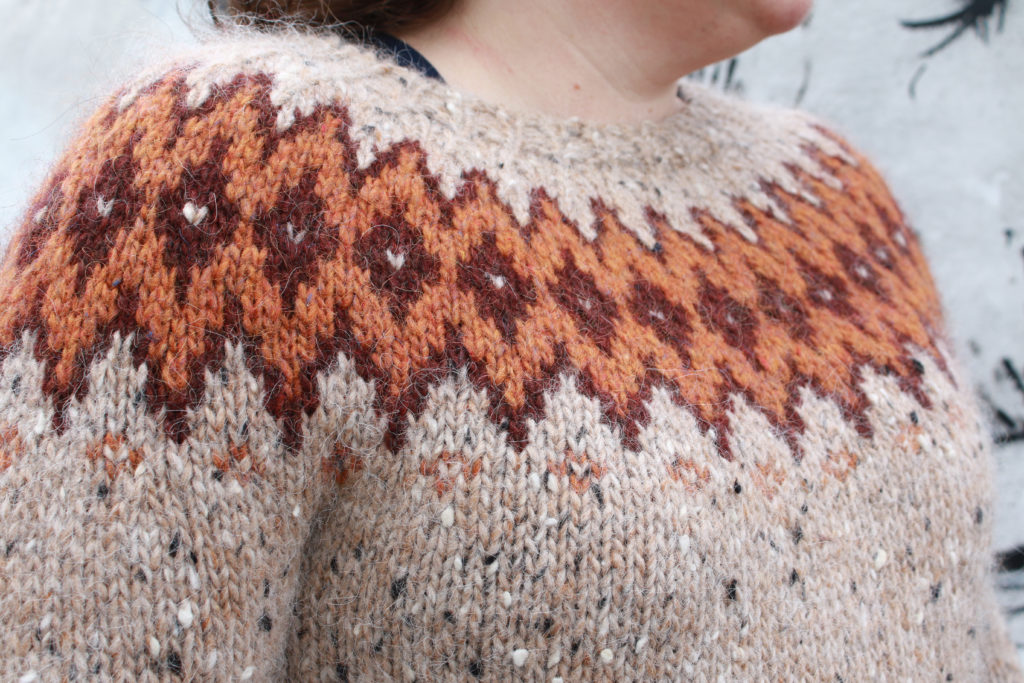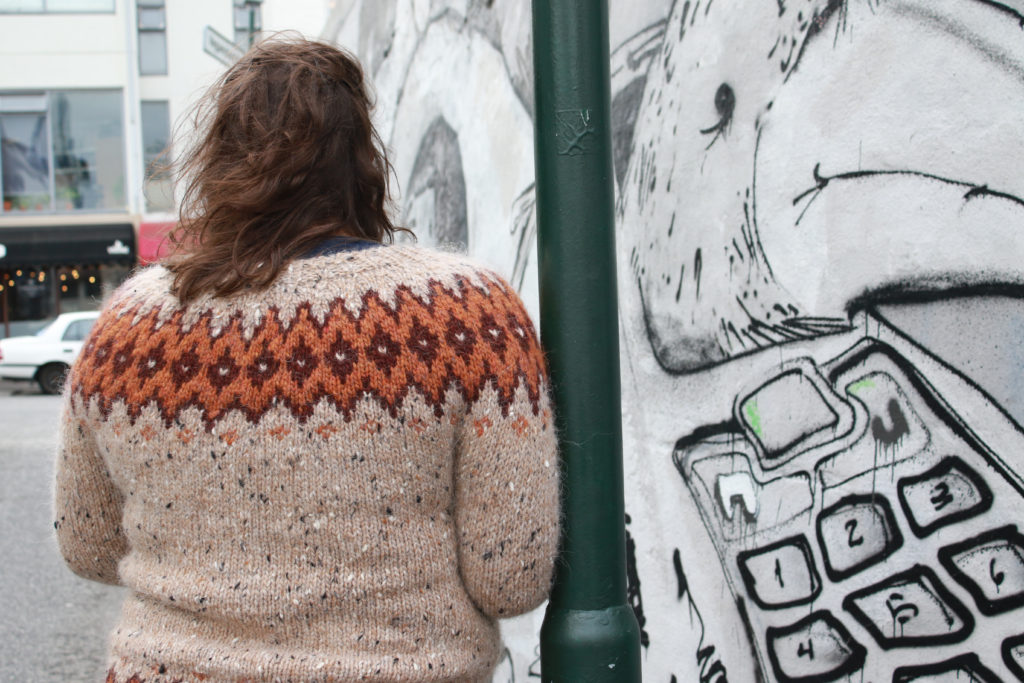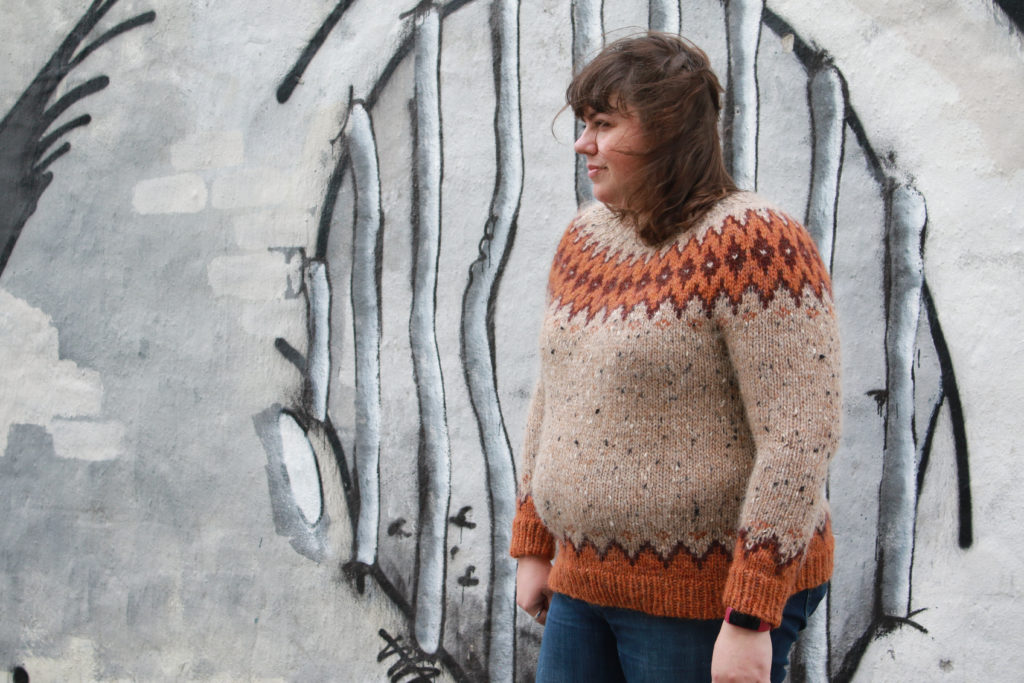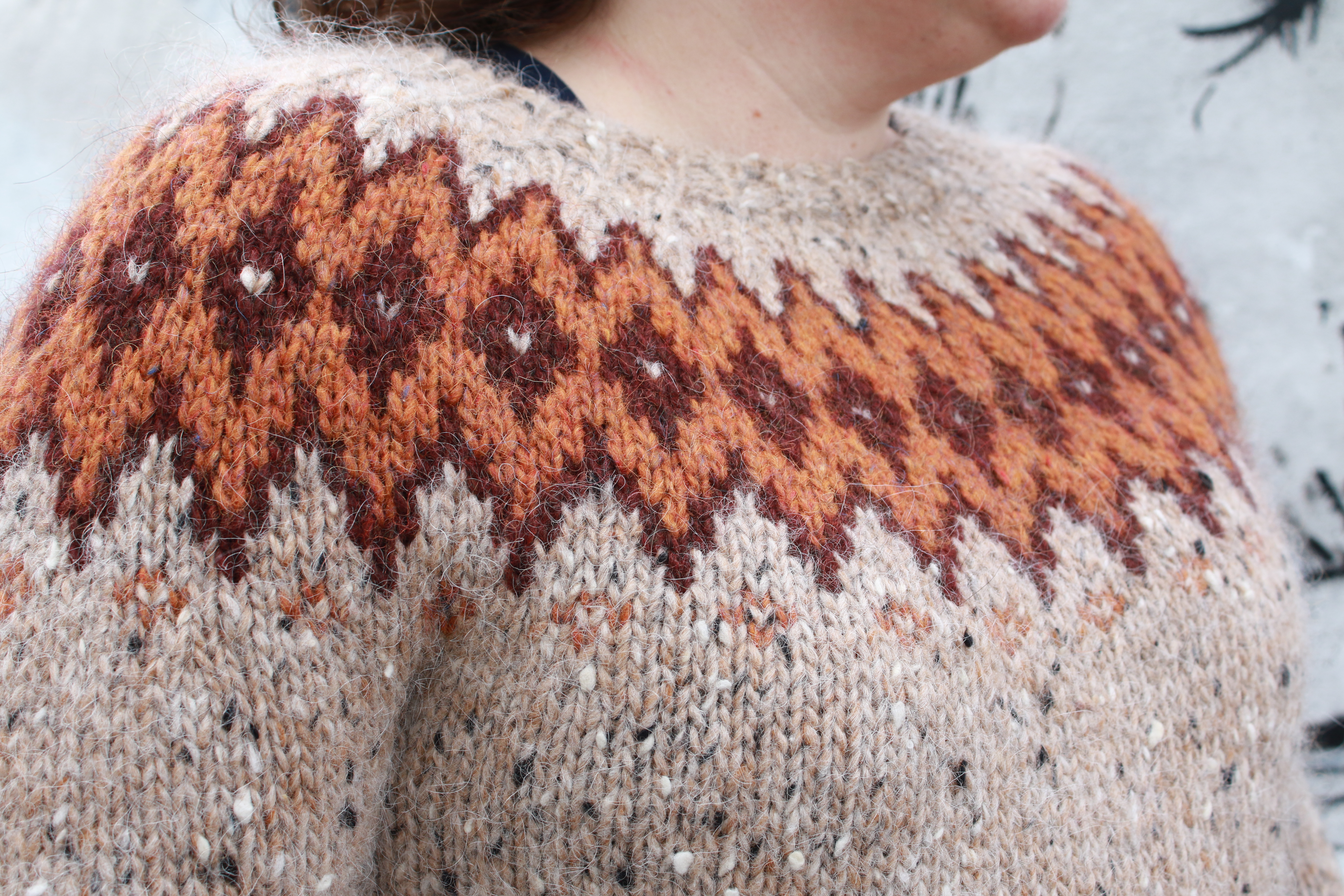I usually like to include the name of the pattern in my blog titles, but as this sweater is so sexily named #26 page 44, I simply called it Japanese Lopi Sweater. The “page 44” refers to the page number of the Japanese Iceland Lopi book (Etsy link), which is entirely in Japanese.
But don’t worry—you don’t have to read Japanese to knit these patterns! Because aside from what I assume are the pattern notes, there aren’t any words! The patterns almost exclusively use Ístex Álafosslopi with maybe a handful of Léttlopi thrown in. The gauge uses familiar Arabic numerals, and the sizes are ridiculously small so just ignore them anyway. I did a flip-through video when I first got the book, so you can see what I mean.
That’s right. You have numbers to follow and a schematic and you just knit. It’s both liberating and exasperating at the same time. But! If you’ve knit a sweater or two and don’t mind the thought of possibly having to rip back, it’s really not challenging at all.
Knitting a Japanese Lopi sweater
Cast on numbers are provided for two sizes. Two TINY sizes. I think the largest size would fit a 35″ bust. Doesn’t that seem excessively small?! (I’d love to have a discussion about Japanese knitting patterns in general but this is the only pattern book I have, so if someone else has blogged about this, please send me a link!)

So I had to do some work to make it the size that fits me. Which I have to do with a lot of these sweaters, to be honest. I know there’s a lot of griping about sizes in North American patterns and how many of them don’t extend to a true plus-size range, and that is an issue. But compared to most knitting patterns I’ve seen from around the world, we still have a broader range of sizes. I’ll go into this in more detail in another post, but trust me that it’s really rare to see a pattern extend past a 45″ chest anywhere outside of North America.
You have cast-on numbers, you have row numbers (and measurements, so you can check against your gauge). Insert admonition to always do a gauge swatch here. You have a schematic, and you can figure out the pattern gauge based on the materials. Still, with just a little bit of experience in knitting sweaters, you can totally do this. You could “cheat” and plug the charts into an existing pattern you like. You may need to accommodate for differences in the pattern stitch counts. The other part of this that was tricky was that there are a few rows in which you’re working three colors in one row. But it’s manageable.

Raising the back neck
One thing that I found to be really interesting was how they raised the back neck. The schematic shows the body worked in the round to the underarms, and then a section of the body is worked flat in rows to raise the back overall. Most yoked sweater patterns work short rows at the top of the neck to raise the back neck. It did get a little dicey when I was sewing the sleeve stitches to the body. Mine was a little less graceful than it could have been, since I had to do so much editing to the pattern and hadn’t worked this style before.

So I stuffed this sweater into my suitcase and took it with me to Iceland. I only wore it the day that we shot these photos in Reykjavik, but I was really glad I did. While we had great weather for much of the trip, this particular day was overcast and a bit rainy. But I stayed nice and warm in my sweater. Álafosslopi repels water to an extent, making it an excellent option for a day when it’s chilly and occasionally rainy.
I’m really happy with my color choices. The orange and rust just pick up the flecks of tweed in the beige so nicely. I still have a ton of the beige leftover, so I’m contemplating using it to knit an Eldfell. Even though it also has a few rows with three colors in the row.
Thanks to my friend Erin for taking these photos! Check out the post about my Birki.
Details
- Yarn: Ístex Álafosslopi in Beige Tweed, Amber Heather, and Sheep Sorrel
- Needles: US 9 and 10
- Date started: January 2017
- Date finished: July 2017 (though I sewed the arms closed on August 27)
- Previous post


The sweater looks great, and the color combo is perfect.
[…] sweater” I knit for this Iceland trip in a timely manner. You can read that one here if you’re so […]
[…] am slightly obsessed with Japanese knitting books. I’ve used one before to knit a Lopi sweater. And recently I purchased two more from Etsy. So I figured, why not share some of my obsession […]
[…] If you want to do some poking around on your own and can access Ravelry, here’s a pre-filtered search link. You must have a Ravelry account to access this page. Please note as well–a lot of the patterns for Alafosslopi aren’t in English. You don’t have to speak another language to knit a pattern, but you need to be comfortable with cobbling together information (such as I did with the Japanese Lopi pattern). […]